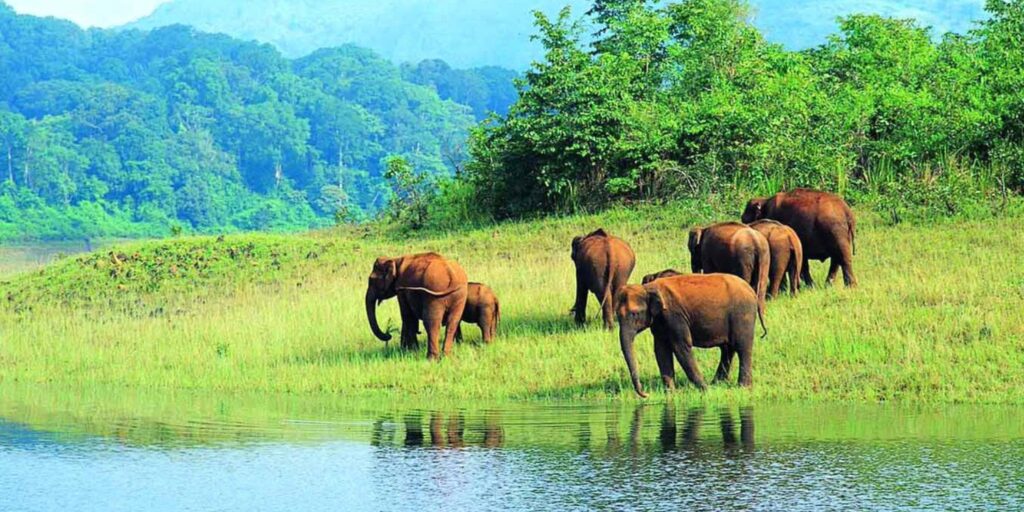India, a land of diverse ecosystems and breathtaking landscapes, is home to a rich tapestry of Wildlife Sanctuary in India.
From the mighty Himalayas to the dense rainforests of the Ghats of the Deccan Plateau to the coastal wetlands, the country harbours a remarkable array of flora and fauna.
Wildlife Sanctuary in India
Wildlife enthusiasts and nature lovers find solace and excitement in exploring the numerous Wildlife Sanctuary in India. In this extensive guide, we delve into the heart of the wild, uncovering the Wildlife Sanctuary in India
As we delve into this virtual odyssey, we find ourselves drawn into the mesmerizing landscapes that define Wildlife Sanctuary in India.
Our journey begins in the iconic Jim Corbett National Park, where the roar of the Bengal tiger reverberates through the deciduous forests of Uttarakhand.
We then traverse the country, encountering the majestic Asiatic lions of Gir National Park in Gujarat, the elusive snow leopards in Hemis National Park of Ladakh, and the vibrant marine life in the Gulf of Mannar Marine National Park in Tamil Nadu.
Moreover, our journey introduces us to the custodians of Wildlife Sanctuary in India– the conservationists, forest officials, and local communities whose tireless efforts ensure the protection and sustainability of these vital ecosystems.
Their stories add depth to our understanding, emphasizing the importance of community-driven conservation and the need for global awareness and cooperation in safeguarding our planet’s natural heritage.
This exploration aims to inspire a sense of wonder and appreciation for the remarkable diversity that graces Wildlife Sanctuary in India. Whether you are an avid wildlife enthusiast, a nature lover, or someone seeking a profound connection with the wild, join us on this odyssey through India’s untamed wilderness.
Welcome to the Top 29 Must-Visit Wildlife Sanctuary in India – where the wild whispers its secrets and invites us to become part of its eternal symphony.
1. Jim Corbett National Park, Uttarakhand: Roar of the Bengal Tiger
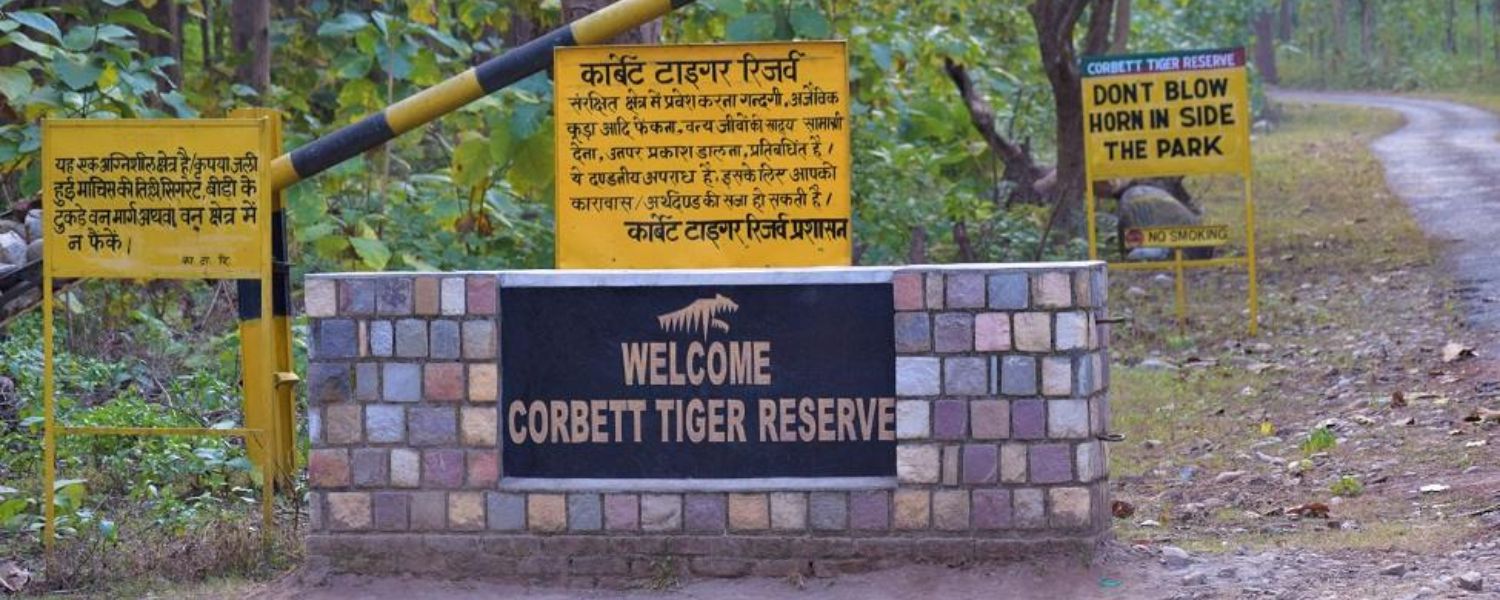
Established in 1936, it remains a prime destination for witnessing the majestic Bengal tiger in its natural habitat – the first Wildlife sanctuary in India.
Additionally, these landscapes support a variety of species, including elephants, leopards, and numerous bird species.
Nestled in the foothills of the Himalayas in the northern state of Uttarakhand, Jim Corbett National Park stands as an iconic testament to wildlife sanctuaries in India. Moreover, it continues to be a haven for nature enthusiasts and wildlife lovers alike.
In 1936, Hailey National Park was established in honour of the legendary British hunter-turned-conservationist Jim Corbett.
Spanning across the districts of Nainital and Pauri Garhwal, the park encompasses a diverse range of landscapes, from dense forests and grasslands to the meandering Ramganga River.
Notably, the park’s biodiversity extends beyond its famed predators, creating a harmonious ecosystem. Notably, jeep safaris wind through the narrow trails, offering a close encounter with the park residents.
Moreover, the Corbett Museum, located at Kaladhungi, provides insights into the life and legacy of Jim Corbett.
Additionally, local communities are integral to these efforts, as their awareness and involvement contribute significantly to the sustainable future of the park and its inhabitants.
Jim Corbett National Park is India’s best and top Wildlife sanctuary; its raw, untamed beauty and the resonating roars of the Bengal tiger encapsulate the essence of India’s commitment to preserving its natural heritage.
Furthermore, it beckons visitors to witness the wild in its purest form.
2. Ranthambore National Park, Rajasthan: Tigers amidst Ancient Ruins
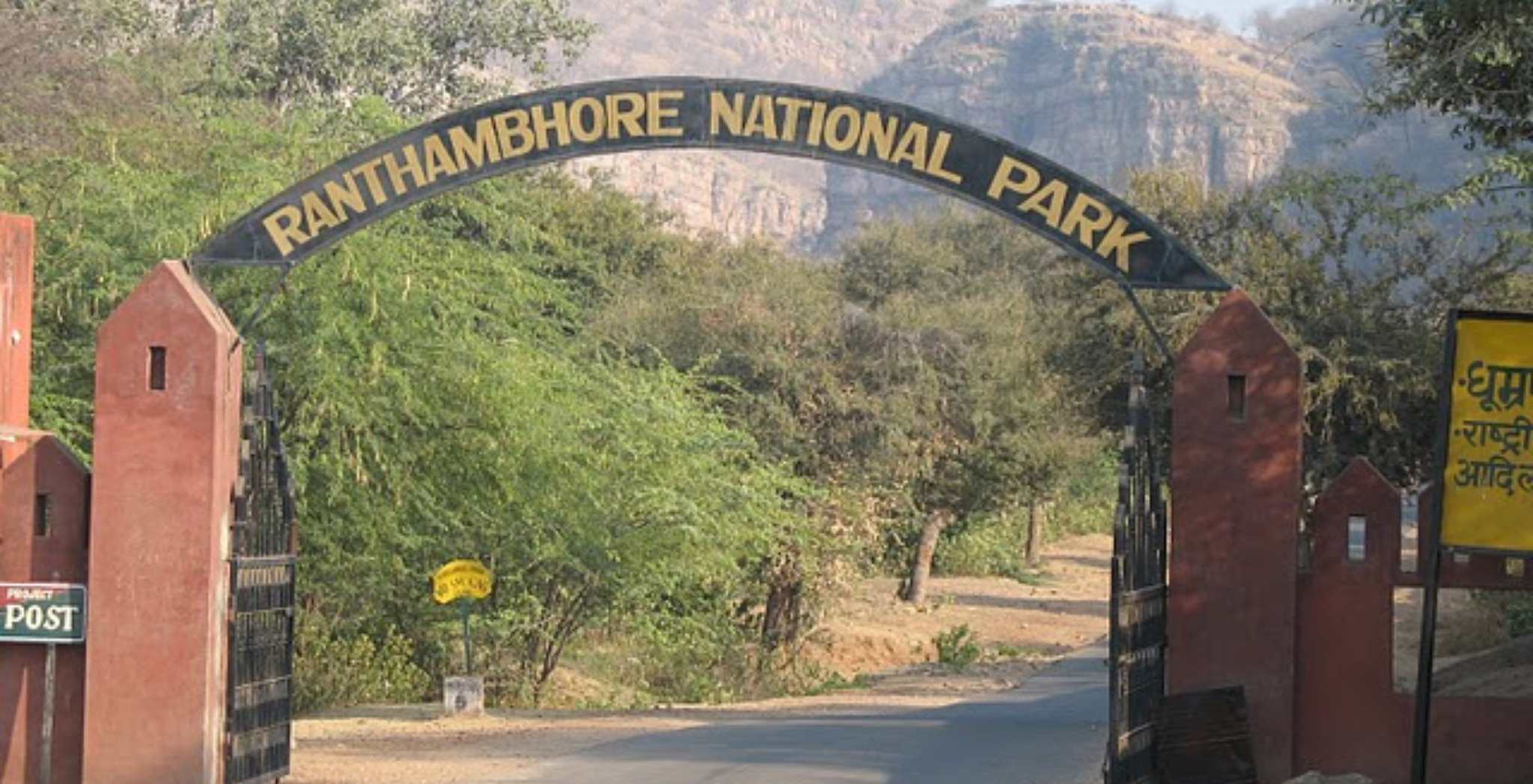
Ranthambore is the second wildlife sanctuary in India to visit, given its unique blend of wildlife and history. Additionally, it is home to the historic Ranthambore Fort and a thriving population of Bengal tigers.
The ruins of the fort add an enchanting backdrop to the park, creating a surreal atmosphere for wildlife enthusiasts. Moreover, the dry forests and open lands offer ideal conditions for spotting tigers, leopards, sloth bears, and a diverse range of birdlife.
Notably, the park is home to the iconic Ranthambore Fort, a UNESCO World Heritage Site.
This fort stands as a silent observer of the ancient era of Maharajas, and visitors can witness the magnificent cats against the backdrop of historic structures, creating a unique blend of wildlife and heritage.
Ranthambore’s diverse ecosystems also host leopards, sloth bears, and many avian species. Consequently, this makes it a captivating destination for history and nature enthusiasts alike.
3. Kaziranga National Park, Assam: Rhinos on the Brahmaputra Floodplains

Kaziranga is one of the most visited wildlife sanctuaries in India. Notably, it is a World Heritage Site renowned for its successful conservation efforts, particularly for the Indian one-horned rhinoceros.
Furthermore, the park’s unique topography, with its tall grasses and shallow water bodies, offers a picturesque setting for safari enthusiasts to witness the grace of the one-horned rhinoceros in their natural habitats.
Established in 1905, Kaziranga is a World Heritage Site for the endangered Indian one-horned rhinoceros.
Moreover, its expansive landscapes, spanning over 1000 square kilometres, are a mosaic of tall grasslands, dense forests, and serene water bodies, creating an ideal habitat for rich flora and fauna.
The pride of Kaziranga undoubtedly lies in its population of the iconic Indian one-horned rhinoceros, a species that faced the brink of extinction in the early 20th century.
The park’s undulating terrains, punctuated by swamps and wetlands, provide a sanctuary for these magnificent creatures.
Notably, visitors to Kaziranga often see these prehistoric-looking giants grazing peacefully or wallowing in the water, emblematic of the park’s successful conservation efforts.
Furthermore, the park’s wetlands, comprising numerous oxbow lakes, attract many migratory birds, making it a birdwatcher’s paradise.
These adventures provide an opportunity to traverse the floodplains, offering close encounters with the resident wildlife. Importantly, the Bagori and Kohora ranges are popular zones for safaris, each revealing a different facet of Kaziranga’s biodiversity.
Beyond its role as a wildlife sanctuary, Kaziranga actively engages in conservation initiatives and community-based programs. In particular, the park collaborates with local communities, fostering a harmonious relationship between humans and wildlife.
As the sun sets over the floodplains and the rhinos find solace in the embrace of Kaziranga, visitors leave with memories and a profound appreciation for the delicate dance of life in this unique and irreplaceable ecosystem
4. Sundarbans National Park, West Bengal: Royal Bengal Tigers in the Mangroves
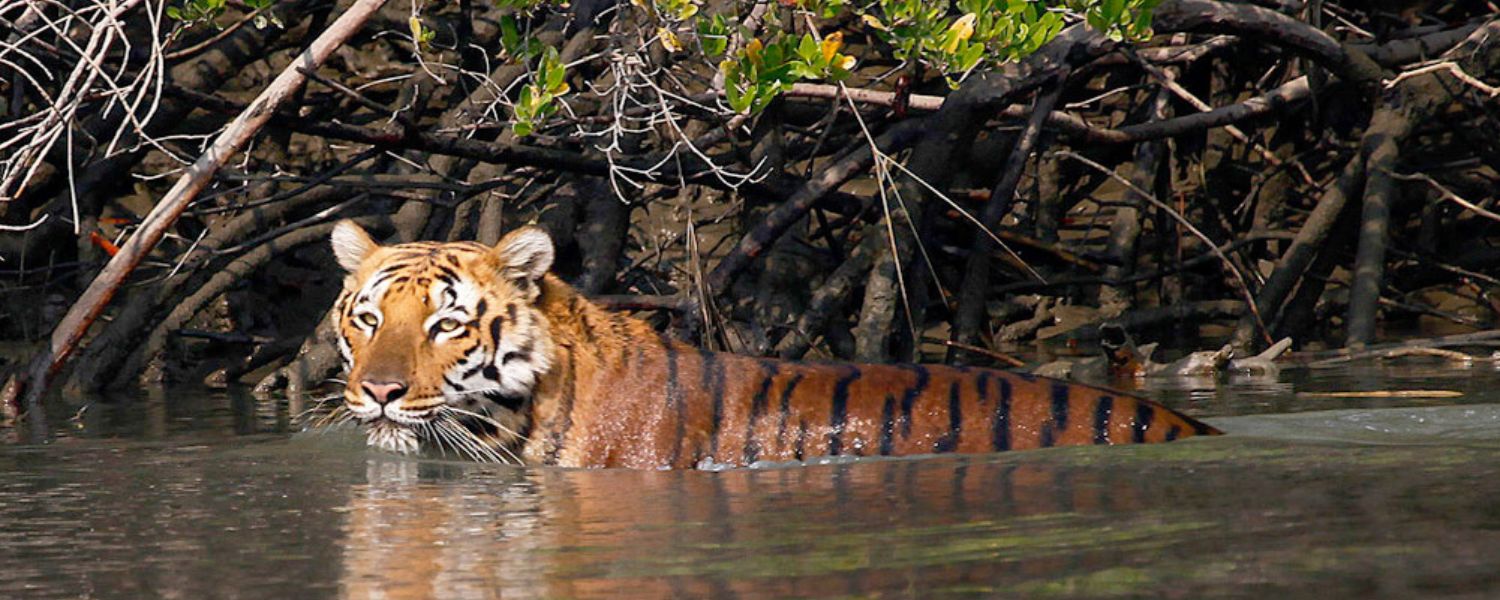
The Sundarbans is another one of the wildlife sanctuaries in India. Notably, the world’s largest mangrove forest is a unique ecosystem where the mighty Royal Bengal tiger reigns supreme.
Accessible only by boat, this UNESCO World Heritage Site is a maze of tidal waterways, mudflats, and small islands. Moreover, apart from tigers, the Sundarbans are home to saltwater crocodiles, spotted deer, and many bird species.
Sundarbans National Park in West Bengal is a mystical world where the land meets the sea in a maze of mangrove forests.
Furthermore, the park’s unique ecosystem is a vital habitat for diverse fauna, including saltwater crocodiles, spotted deer, and numerous bird species.
Navigating the waterways, visitors embark on safaris, hoping to glimpse the magnificent Bengal tigers in their mangrove kingdom.
5. Periyar National Park, Kerala: Elephants and Spice Plantations

The park’s artificial lake provides a picturesque setting for boat safaris, allowing visitors to spot elephants, sambar deer, and the elusive Indian bison amidst the lush greenery.
Nestled in Kerala, Periyar National Park is a lush expanse where wildlife thrives amidst spice-scented plantations.
Additionally, visitors can embark on boat safaris on Periyar Lake, offering a unique opportunity to witness elephants, gaurs, and langurs against spice-scented hills.
The park’s harmonious blend of wildlife and spice plantations makes it a distinctive destination. Importantly, it provides a sensory experience of Kerala’s natural and cultural treasures.
6. Gir National Park, Gujarat: Asiatic Lions in the Dry Forests
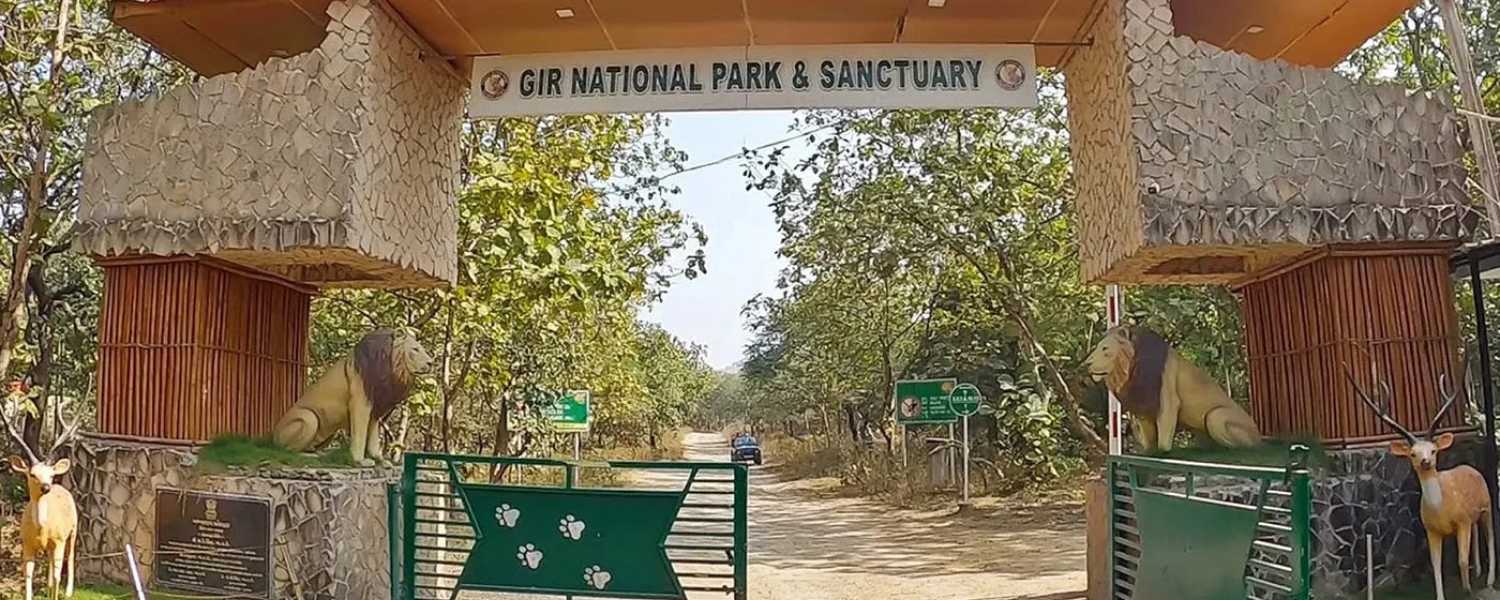
Gir, yet another Wildlife sanctuary in India, is the only place in the world where the Asiatic lion resides in the wild, which is a testament to successful conservation efforts.
The dry deciduous forests of Gir provide a unique backdrop for wildlife enthusiasts seeking glimpses of lions, leopards, and various species of deer. The park is a haven for both biodiversity and cultural heritage.
Nestled in the dry deciduous forests of Gujarat, Gir National Park stands as the last refuge of the Asiatic lion. Home to a thriving population of these majestic big cats, Gir offers a unique safari experience amid the rugged terrain.
Visitors can witness the regal lions against arid landscapes, where the Gir ecosystem also shelters leopards, deer, and diverse avian species.
The park’s conservation success story makes it a crucial destination for wildlife enthusiasts and those seeking the rare opportunity to encounter the Asiatic lion in its natural habitat.
7. Bandipur National Park, Karnataka: A Symphony of Wildlife in Southern India
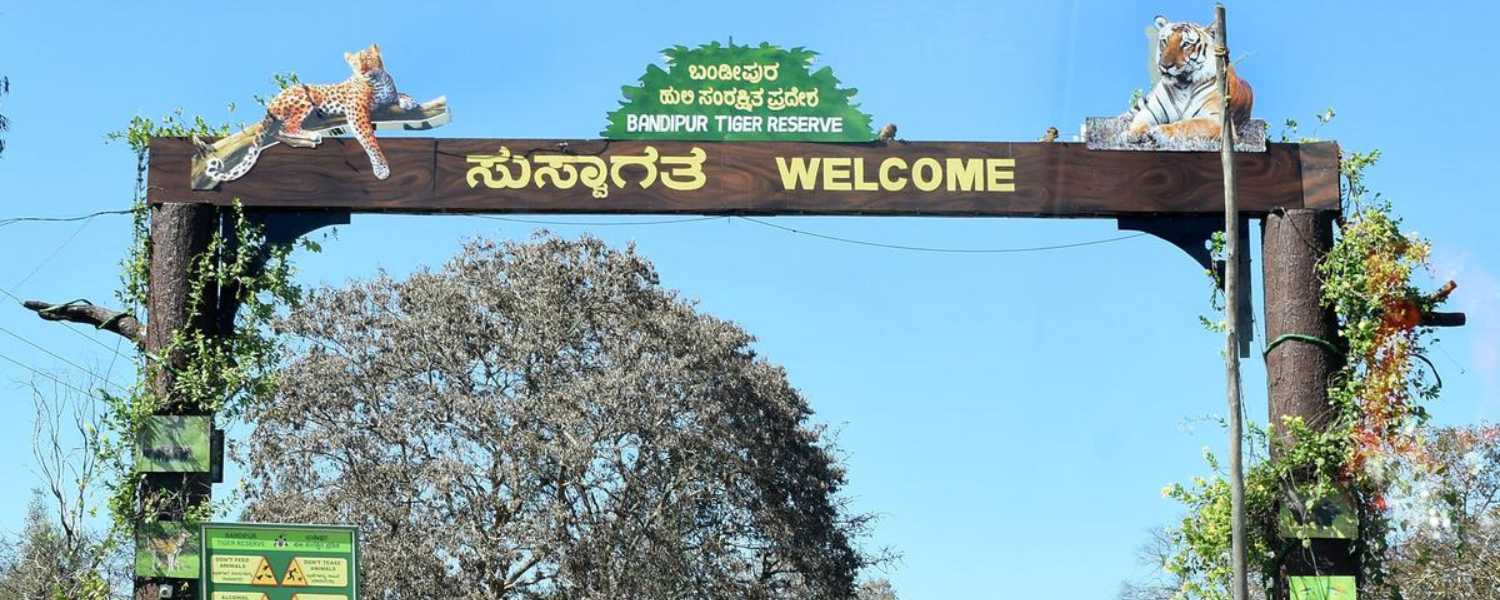
Bandipur, a well-known wildlife sanctuary in India, is part of the Nilgiri Biosphere Reserve and a haven for wildlife lovers who want to meet with elephants, gaurs, and many bird species.
The park’s varied landscapes, including dry deciduous forests and grassy meadows, create an ideal habitat for diverse wildlife.
In the scenic landscapes of southern India, Bandipur National Park in Karnataka orchestrates a symphony of wildlife. Elephants, tigers, deer, and vibrant birdlife thrive in its varied ecosystems.
Visitors can embark on safaris to witness the enchanting beauty of Bandipur, where dense forests, grassy meadows, and the Moyar River create a picturesque setting.
The park’s commitment to conservation and sustainable ecotourism makes it a gem in the crown of Karnataka’s wildlife sanctuaries.
8. Nagarhole National Park, Karnataka: Land of the Kabini River

Nagarhole, now known as Rajiv Gandhi National Park, is characterized by its dense forests, waterfalls, and the meandering Kabini River. The park is famous for its successful population of elephants, Indian bison, and elusive big cats.
The backwaters of the Kabini River offer a serene backdrop for wildlife safaris.
Adjacent to Bandipur, Nagarhole National Park in Karnataka unfolds its wonders along the banks of the Kabini River. Further, the park’s lush forests and water bodies create a haven for wildlife, including elephants, leopards, and Indian bison.
Boat safaris on the Kabini River offer a unique perspective, allowing visitors to witness the rich biodiversity in the park.
However, Nagarhole’s pristine landscapes and commitment to protecting its natural treasures make it a sought-after destination for those seeking serenity and the thrill of encountering untamed wildlife in its natural habitat.
9. Kanha National Park, Madhya Pradesh: Mowgli’s Playground

However, Kanha, often referred to as the inspiration for Rudyard Kipling’s “The Jungle Book,” is a mesmerizing landscape of sal and bamboo forests.
The park’s meadows, known as maidans, provide an ideal setting for spotting tigers, leopards, and the rare barasingha deer.
Kanha’s lush sal and bamboo forests provide a habitat for the Bengal tiger, leopards, and the rare barasingha deer.
Further, Safaris through Kanha offers glimpses of the diverse wildlife, while the meandering Banjaar River adds to the park’s scenic charm.
Kanha’s commitment to wildlife conservation and its association with literary and cinematic history make it a fascinating goal for nature lovers and those seeking to step into the world of Mowgli and his jungle companions.
10. Tadoba Andhari Tiger Reserve, Maharashtra: Land of the Irai Lake

Furthermore, Tadoba, in the heart of Maharashtra, is one of the country’s premier tiger reserves. The Irai and Tadoba lakes attract many wildlife, including tigers, leopards, and sloth bears.
The reserve is known for its biodiversity and offers a rare chance to explore the wild landscapes of central India.
While Placed in the core of Maharashtra, Tadoba Andhari Tiger Reserve unfolds its wonders around the Irai Lake.
After, the reserve is known for its thriving tiger population and diverse landscapes, ranging from dense forests to open grasslands.
Tadoba’s rich biodiversity includes leopards, sloth bears, and a variety of bird species. While, the picturesque Irai Lake, surrounded by lush greenery, adds to the tranquil ambiance of the reserve.
Safaris through Tadoba offers a chance to witness the dynamic interactions of wildlife against the backdrop of diverse ecosystems, making it a captivating destination for wildlife enthusiasts and photographers alike.
11. Pench National Park, Madhya Pradesh and Maharashtra: Tales of the Jungle
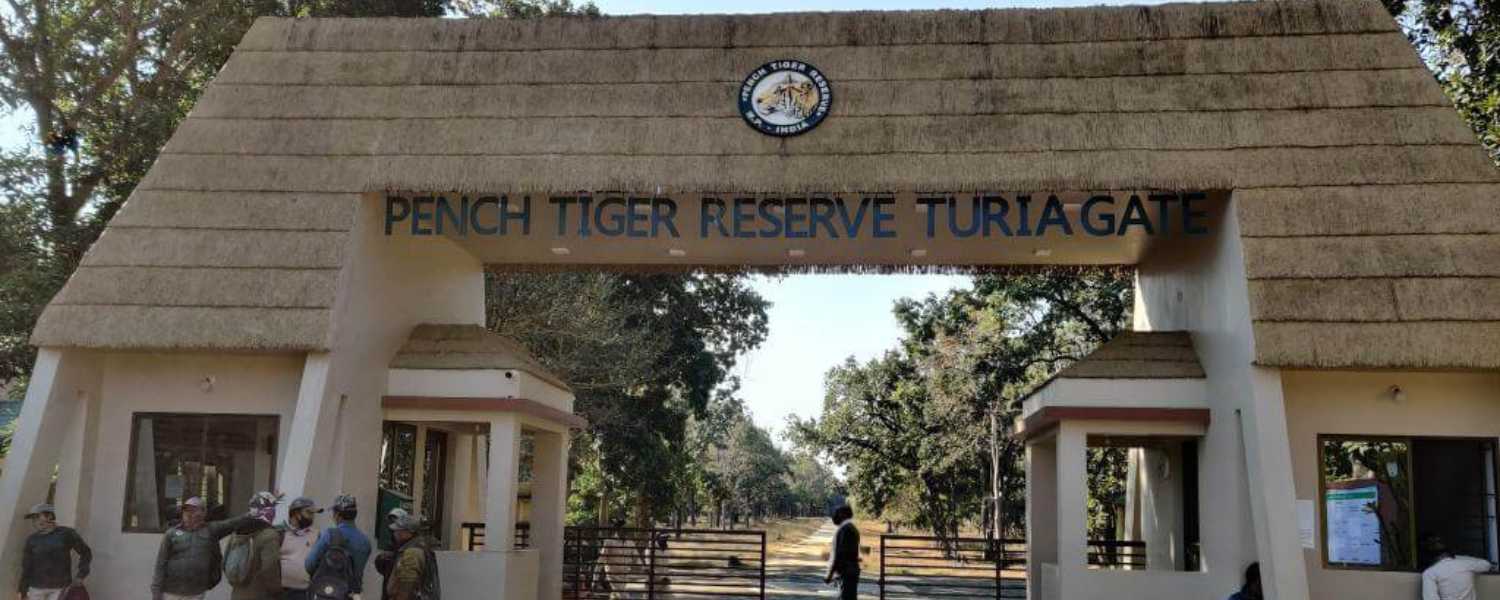
However, Pench, straddling the borders of Madhya Pradesh and Maharashtra, is a landscape of rolling hills, meadows, and the meandering Pench River. The park’s diverse flora and fauna provide a thriving habitat for tigers, leopards, and a variety of bird species.
The setting is reminiscent of the jungles described in Rudyard Kipling’s works.
Furthermore, Spanning across Madhya Pradesh and Maharashtra, Pench National Park weaves tales of the jungle where Rudyard Kipling found inspiration for “The Jungle Book.”
The park’s lush landscapes, including teak forests and meandering rivers, provide various wildlife habitats. While, Tigers, leopards, and diverse bird species roam freely, creating a captivating narrative for visitors on safari.
Pench’s enchanting beauty and connection to literary history make it a sought-after destination for nature enthusiasts and those eager to delve into the stories of Mowgli and his jungle adventures.
12. Hemis National Park, Ladakh: Snow Leopards in the High Altitudes

However, Hemis, located in the high-altitude desert of Ladakh, is known for its unique biodiversity, including the elusive snow leopard. The stark landscapes of Hemis provide habitat for blue sheep, Himalayan marmots, and various bird species.
Further, The park offers a surreal experience of wildlife in the trans-Himalayan region.
In the rugged terrains of Ladakh, Hemis National Park is a sanctuary for the elusive snow leopard. Further, this park is a haven for unique fauna adapted to extreme conditions.
Visitors embark on treks through the stark landscapes, hoping to glimpse the rare snow leopard, Tibetan wolves, and blue sheep.
Hemis’ stark beauty, cultural significance, and the challenge of spotting the ghosts of the mountains make it a remarkable destination for those seeking an adventure in the high-altitude realms of Ladakh.
13. Mudumalai National Park, Tamil Nadu: Nilgiri Hills Wildlife Haven

Mudumalai, nestled in the Nilgiri Hills, is part of the Western Ghats and a vital component of the Nilgiri Biosphere Reserve.
The park’s diverse ecosystems, ranging from moist deciduous forests to grassy meadows, support a variety of wildlife, including elephants, Indian bison, and leopards.
Nestled in the Nilgiri Hills of Tamil Nadu, Mudumalai National Park is a haven for wildlife amid the mist-covered mountains.
Moreover, the park’s diverse ecosystems, ranging from deciduous forests to grassy meadows, provide a habitat for elephants, Indian bison, and various deer species.
Visitors can explore the Nilgiri Biosphere Reserve, of which Mudumalai is a part, through safaris and nature walks. While the Moyar River flowing through the park adds to its scenic charm.
Mudumalai’s proximity to the hill stations of Ooty and Coonoor makes it an ideal destination for those seeking a blend of wildlife exploration and the serenity of the Nilgiri Hills.
14. Sariska Tiger Reserve, Rajasthan: Tigers amid the Aravalli Hills

However, Sariska, nestled in the Aravalli Hills, is a vibrant landscape known for its historical ruins and thriving wildlife.
The park is home to tigers, leopards, and various deer species. Further, the ancient Kankwari Fort and the Neelkanth Temples add a historical and cultural dimension to the wildlife experience.
Nestled in the Aravalli Hills of Rajasthan, Sariska Tiger Reserve invites visitors into a landscape where tigers roam amidst ancient ruins and dense forests.
Moreover, the reserve is home to various wildlife, including leopards, sambar deer, and numerous bird species.
The historic Kankwari Fort within the reserve adds a cultural dimension to the wildlife experience. While Safaris through Sariska offer glimpses of the regal Bengal tiger against the backdrop of the Aravalli Hills.
The park’s historical and natural treasures make it a captivating destination for those seeking a royal rendezvous with Rajasthan’s wildlife.
15. Bandhavgarh National Park, Madhya Pradesh: Fortresses and Tigers

Although, Bandhavgarh, with its ancient fortresses and dense Sal forests, is renowned for having one of India’s highest densities of tigers.
While, the park’s varied landscapes, including grassy meadows and cliffs, provide an ideal setting for wildlife enthusiasts seeking encounters with tigers, leopards, and many bird species.
Bandhavgarh National Park unfolds its wonders amid ancient fortresses and thriving wildlife in Madhya Pradesh.
Moreover, the park’s centrepiece is the Bandhavgarh Fort, perched at the top of a hill, giving scenic views of the surrounding landscapes.
Bandhavgarh is renowned for its high density of Bengal tigers, making it a place for wildlife enthusiasts. While, the park’s diverse ecosystems, including sal forests and grassy meadows, provide leopards, deer, and bird species habitat.
Safaris through Bandhavgarh offers a chance to witness the elusive tigers and explore the historical ruins, creating a blend of cultural exploration.
16. Dachigam National Park, Jammu and Kashmir: Home of the Hangul Deer
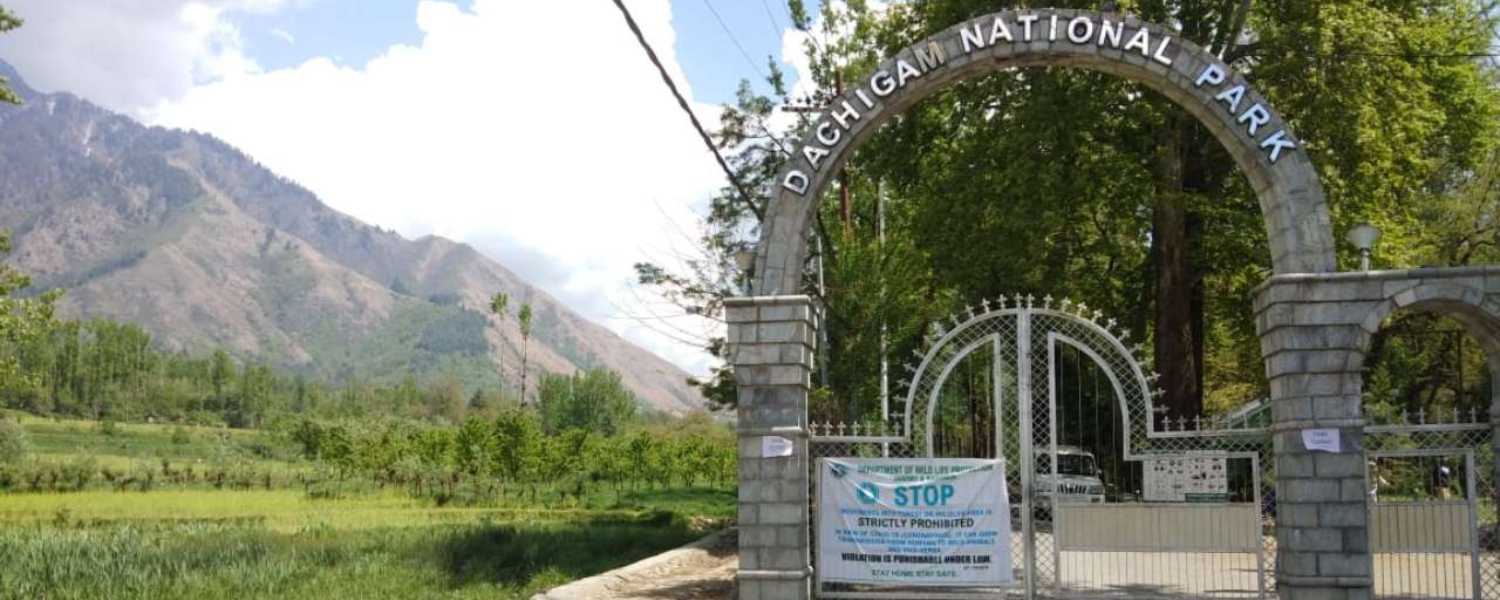
However, Dachigam, located near Srinagar, is known for its high-altitude landscapes and the endangered Hangul deer.
The park’s steep terrain and alpine meadows provide a habitat for wildlife, including the elusive snow leopard. While Dachigam is a unique blend of wildlife conservation and stunning Himalayan scenery.
Nestled in the lap of the Himalayas, Dachigam National Park in Jammu and Kashmir stands as a sanctuary for the endangered Hangul deer.
The park’s name translates to “ten villages,” reflecting its historical significance as the royal hunting grounds.
Moreover, Dachigam’s dense coniferous forests provide a habitat for not only the Hangul deer but also Himalayan black bears, leopards, and various avian species.
The park’s pristine landscapes and the thrill of spotting the rare Hangul make it a captivating destination for wildlife enthusiasts and those seeking the tranquillity of the Himalayan wilderness.
17. Indravati National Park, Chhattisgarh: Bastar’s Wilderness Gem

Indravati, located in the tribal heartland of Bastar, is one of the finest wildlife sanctuaries in Chhattisgarh.
While, the park’s dense forests, interspersed with rivers and waterfalls, provide a habitat for tigers, leopards, and the endangered wild buffalo. Indravati offers a glimpse into the rich cultural tapestry of Bastar.
Furthermore, in the heart of Bastar in Chhattisgarh, Indravati National Park unfolds as a wilderness gem. The park is named after the mighty Indravati River, and its diverse ecosystems include dense forests, grasslands, and riverine habitats.
Indravati is a crucial habitat for the endangered wild buffalo, tigers, and leopards. Moreover, the park’s scenic landscapes, punctuated by the river’s meandering course, offer a picturesque setting for safari enthusiasts.
Indravati’s commitment to biodiversity conservation and its role as a key component of the Indravati-Kawal-Telangana Elephant Reserve make it an essential destination for those seeking to explore the lesser-known treasures of Chhattisgarh’s wildlife.
18. Silent Valley National Park, Kerala: Symphony of the Sholas

Furthermore, Silent Valley, nestled in the Western Ghats, is a pristine wilderness known for its untouched landscapes and diverse ecosystems.
The park’s shola forests, grasslands, and rivers provide a habitat for endangered species such as the lion-tailed macaque and the Nilgiri langur. While Silent Valley is a testament to the importance of preserving untouched wilderness.
In the Western Ghats of Kerala, Silent Valley National Park is a symphony of the Shola forests, diverse flora, and pristine rivers. Moreover, the park’s name stems from the perceived absence of the cicada sounds, creating an atmosphere of serene wilderness.
Silent Valley is a biodiversity hotspot, home to rare and endemic species. While, the Lion-tailed macaque, Malabar giant squirrel, and various orchids thrive in its lush landscapes.
The Kunthipuzha River flowing through the park adds to its natural beauty.
While, Silent Valley’s ecological significance, with its ancient rainforests and unique biodiversity, makes it a must-visit destination for those seeking an immersive experience in the heart of Kerala’s Western Ghats.
19. Bhadra Wildlife Sanctuary, Karnataka: Backwaters and Biodiversity

Bhadra, situated along the backwaters of the Bhadra River, is a biodiverse landscape in the Western Ghats.
Furthermore, the sanctuary’s diverse ecosystems, including moist deciduous forests and grassy meadows, support a variety of wildlife, including elephants, tigers, and rare bird species. Bhadra is a haven for both nature enthusiasts and adventure seekers.
Moreover, Nestled amidst the Western Ghats in Karnataka, Bhadra Wildlife Sanctuary unfolds its wonders along the backwaters of the Bhadra River.
The sanctuary’s diverse landscapes include evergreen forests, grasslands, and the serene Bhadra Reservoir. After, Bhadra is home to various wildlife, including elephants, tigers, and diverse bird species.
While, Visitors can explore the sanctuary through boat safaris on the reservoir, offering a unique perspective on its biodiversity.
Bhadra’s scenic beauty and the thrill of encountering wildlife against the backdrop of backwaters make it a destination for nature admirers and those seeking a tranquil escape in the Western Ghats.
20. Nagzira Wildlife Sanctuary, Maharashtra: Green Oasis in Vidarbha

However, Nagzira, located in the Gondia district of Maharashtra, is a green oasis surrounded by hills and dense forests.
The sanctuary’s varied landscapes provide various wildlife habitats, including tigers, leopards, and sloth bears. The scenic beauty of Nagzira makes it a popular destination for nature lovers and wildlife photographers.
In the heart of Vidarbha, Maharashtra, Nagzira Wildlife Sanctuary emerges as a green oasis amidst the arid landscapes. Moreover, the sanctuary’s diverse ecosystems, ranging from dense forests to grasslands, create a haven for various wildlife.
Tigers, leopards, and numerous bird species find refuge in Nagzira’s picturesque landscapes. The sanctuary’s highlight is the Nagzira Lake, enhancing its scenic charm and providing a serene setting for visitors.
Nagzira’s commitment to conservation and its role in preserving Vidarbha’s biodiversity makes it a sought-after destination for wildlife enthusiasts, offering a tranquil escape into Maharashtra’s central region.
21. Kalakkad Mundanthurai Tiger Reserve, Tamil Nadu: Western Ghats Gem

While, Kalakkad Mundanthurai, nestled in the southern Western Ghats, is a landscape of dense forests, grasslands, and rivers. The reserve’s diverse ecosystems support a variety of wildlife, including tigers, elephants, and the endangered grizzled giant squirrel.
Kalakkad Mundanthurai is a haven for biodiversity enthusiasts and those seeking pristine landscapes.
Nestled within the embrace of the Western Ghats in Tamil Nadu, the Kalakkad Mundanthurai Tiger Reserve is a true gem of southern India’s biodiversity.
Furthermore, its lush landscapes, adorned with rolling hills, dense forests, and vibrant flora, create a haven for diverse wildlife.
Moreover, the reserve is home to the endangered lion-tailed macaque and elusive Bengal tigers, making it a haven for nature enthusiasts and conservationists.
Kalakkad Mundanthurai offers a unique opportunity to explore the untouched beauty of the Western Ghats, providing a serene escape into the heart of Tamil Nadu’s ecological wonders.
22. Nameri National Park, Assam: Confluence of Jia-Bhoreli Rivers
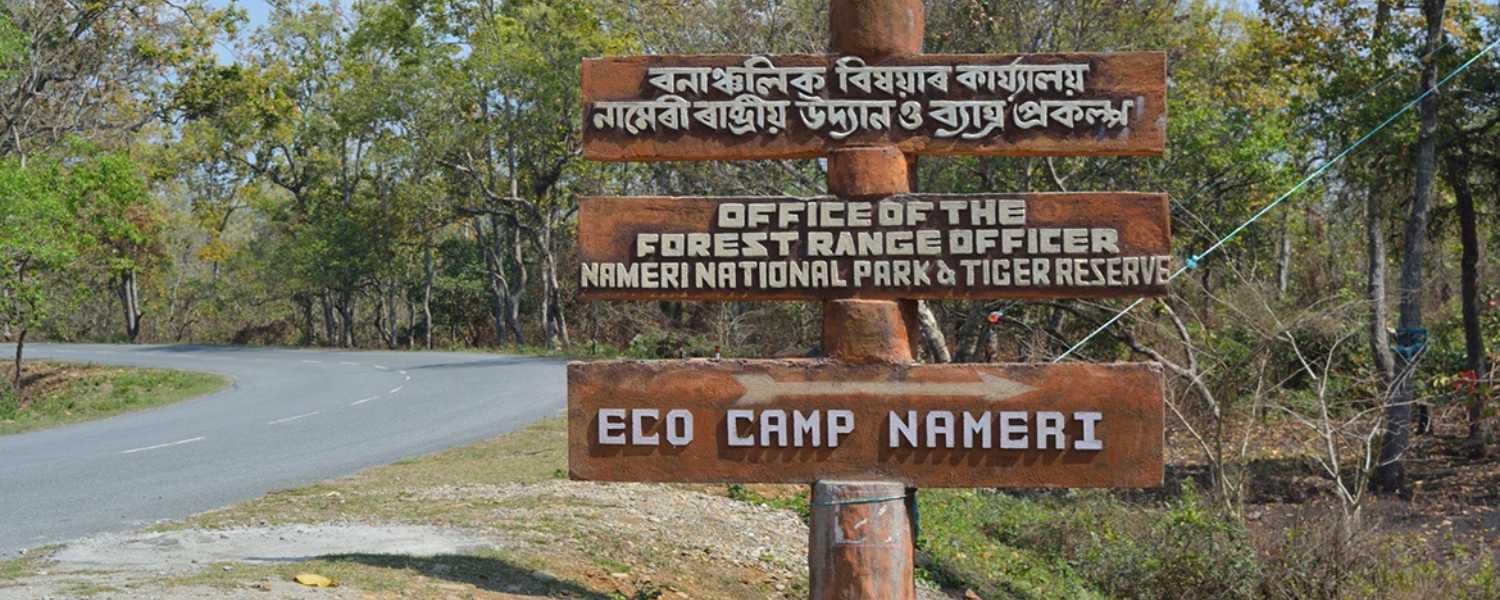
However, Nameri, situated on the banks of the Jia-Bhoreli River, is known for its diverse flora and fauna.
The park’s grasslands, deciduous forests, and riverine habitats provide habitat for elephants, tigers, and various bird species. Nameri is a birdwatcher’s paradise and offers a serene setting for nature enthusiasts.
Nameri National Park in Assam unfolds along the scenic banks of the Jia-Bhoreli Rivers, creating a confluence of natural beauty and wildlife diversity.
Furthermore, the park’s lush landscapes, including deciduous forests and riverine habitats, provide a sanctuary for a rich array of flora and fauna.
While, Bengal tigers, Indian elephants, and abundant bird species thrive in this biodiverse habitat.
Nameri’s unique charm lies in its river safaris, offering visitors an unparalleled perspective on the park’s vibrant biodiversity against the backdrop of the Eastern Himalayas. After, this tranquil haven is an ideal destination for those seeking a peaceful retreat amidst the wilderness of Assam.
23. Simlipal National Park, Odisha: Megafauna Haven in the East

However, Simlipal, a biosphere reserve in Odisha, is known for its dense Sal forests and diverse ecosystems. The park’s landscapes, including grassy meadows and waterfalls, support a variety of wildlife, including elephants, tigers, and the Indian bison.
Simlipal is a haven for biodiversity and offers a unique experience in eastern India.
Situated in the heart of Odisha, Simlipal National Park stands as a megafauna haven in eastern India. While, the sprawling landscapes, featuring dense forests and expansive meadows, provide a thriving habitat for Bengal tigers, Indian elephants, and the majestic gaur.
The presence of the elusive melanistic leopard further enhances Simlipal’s allure.
Further, the park’s diverse ecosystems and vibrant Sal tree forests create a picturesque setting for safari enthusiasts, making Simlipal an essential destination for wildlife enthusiasts and those seeking an immersive experience in the untamed beauty of Odisha’s wilderness.
24. Satpura Tiger Reserve, Madhya Pradesh: Central India’s Untouched Gem
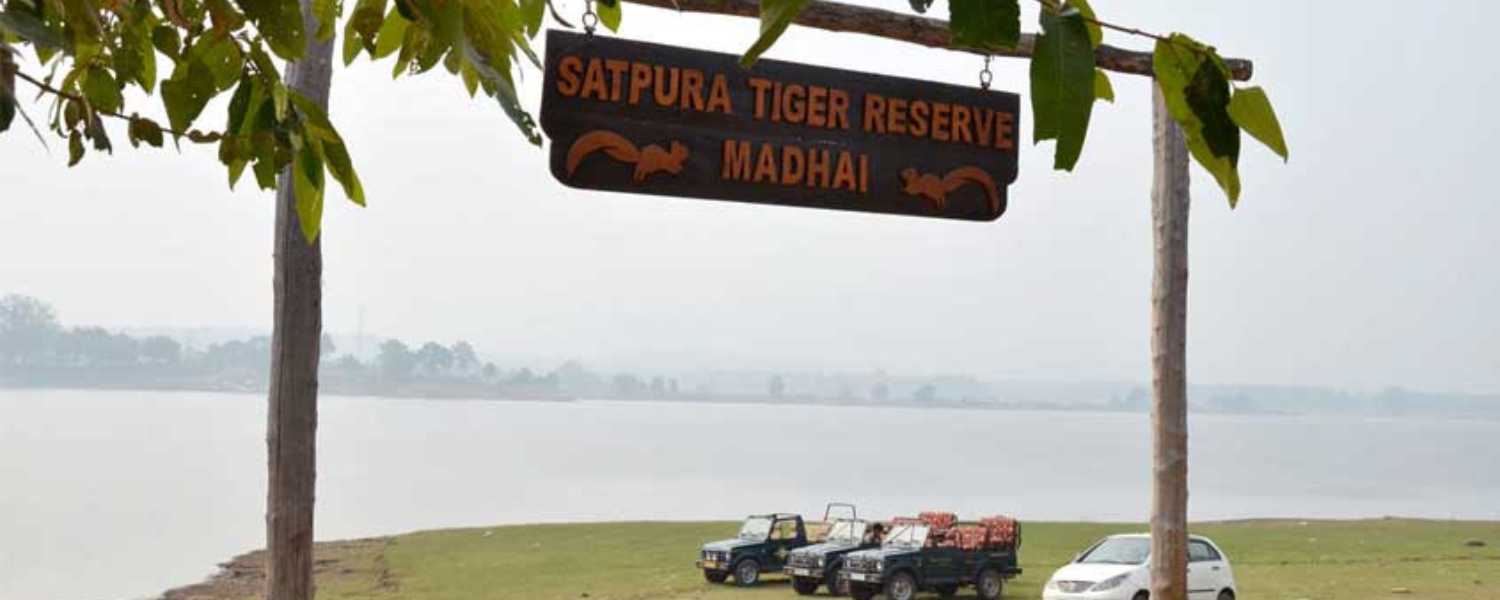
Satpura, located in the Satpura Range, is a landscape of rugged hills, deep valleys, and meandering rivers. While, the reserve’s diverse ecosystems support a variety of wildlife, including leopards, sloth bears, and a myriad of bird species.
However, Satpura offers a unique opportunity for those seeking offbeat, immersive wildlife experiences in Central India.
Deep within the heart of Madhya Pradesh, the Satpura Tiger Reserve unfolds as an untouched gem in the wilderness of Central India.
The reserve’s varied landscapes, encompassing dense forests, expansive grasslands, and meandering rivers, provide a sanctuary for diverse wildlife. Furthermore, Tigers, leopards, and Indian bison thrive in this pristine environment.
The Denwa River, flowing through the reserve, adds to its scenic charm, offering a unique perspective on wildlife encounters.
Satpura’s commitment to sustainable ecotourism, offering options for walking safaris and boat rides, makes it a distinctive destination for nature lovers and those seeking an immersive experience in the heart of Central India’s untouched wilderness.
25. Valmiki National Park, Bihar: Land of the Asiatic Elephant

Valmiki, situated in the foothills of the Himalayas, is Bihar’s only national park. The park’s diverse landscapes, including dense forests and riverine habitats, provide a habitat for elephants, tigers, and the endangered Indian pangolin.
However, Valmiki is a unique destination for those seeking wildlife experiences in the lesser-explored regions of India.
Nestled in the serene landscapes of Bihar, Valmiki National Park stands as the land of the Asiatic elephant, offering a unique wildlife experience in the eastern part of India.
The park’s diverse ecosystems, including dense forests and meandering rivers, provide a haven for various fauna. Valmiki is home to the majestic Asiatic elephants and harbours Bengal tigers, Indian bison, and many bird species.
26. Satkosia Tiger Reserve, Odisha
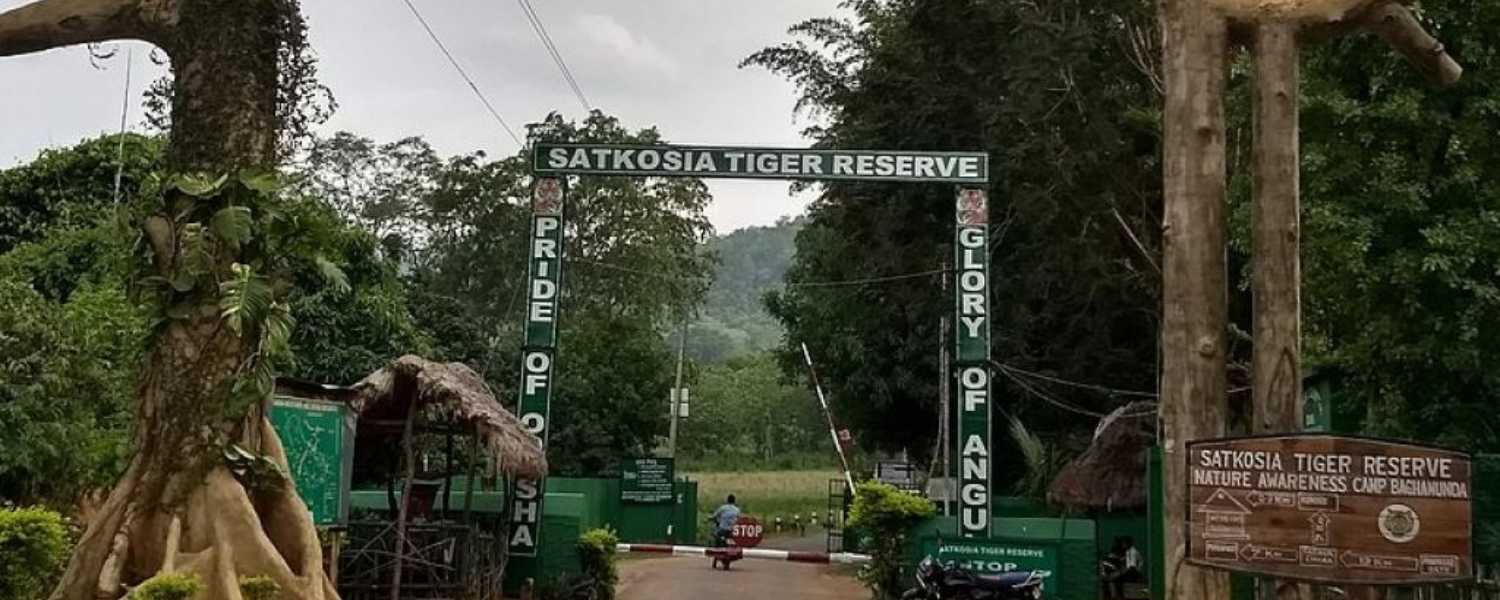
Nestled along the Mahanadi River, Satkosia Tiger Reserve in Odisha is renowned for its picturesque landscapes and diverse flora and fauna.
Visitors can enjoy boat safaris, nature trails, and birdwatching, making Satkosia a must-visit destination for nature enthusiasts.
While stretching along the magnificent Mahanadi River in Odisha, Satkosia Tiger Reserve is a testament to the region’s diverse landscapes and rich biodiversity.
The reserve encompasses lush forests, deep gorges, and riverine habitats, creating a haven for Bengal tigers, leopards, and an array of birdlife. Although, Satkosia is renowned for its river safaris, offering a unique opportunity to explore the wilderness along the banks of the Mahanadi.
The park’s commitment to conservation and its strategic location make it a crucial corridor for wildlife movement in the Eastern Ghats.
It provides a captivating experience for nature enthusiasts and those seeking the thrill of encountering untamed wildlife in its natural habitat.
27. Sathyamangalam Wildlife Sanctuary, Tamil Nadu-Karnataka

Spanning across Tamil Nadu and Karnataka, the Sathyamangalam Wildlife Sanctuary is a vast expanse of the protected area. This sanctuary is part of the larger Nilgiri Biosphere Reserve and is a crucial corridor for elephants moving between the Western and Eastern Ghats.
Further, besides elephants, Sathyamangalam is home to Indian leopards, gaurs, and several species of deer. While the Moyar River flowing through the sanctuary adds to its scenic beauty.
Spanning across the border of Tamil Nadu and Karnataka, the Sathyamangalam Wildlife Sanctuary in India is a vast expanse that epitomizes the harmony between nature and wildlife.
The Wildlife Sanctuary in India’s diverse ecosystems, including deciduous forests and grasslands, create a habitat for various species, including elephants, leopards, and diverse birdlife.
Sathyamangalam’s strategic location as a wildlife corridor connecting the Western and Eastern Ghats enhances its significance in regional conservation efforts.
The sanctuary’s tranquil landscapes and the opportunity to witness diverse Wildlife Sanctuary in India in a natural setting make it a captivating destination for those seeking an escape into the unspoiled wilderness of southern India.
28. Panna National Park, Madhya Pradesh

Situated near the ancient town of Khajuraho, Panna National Park in Madhya Pradesh exemplifies successful wildlife conservation. The park has made significant strides in reintroducing tigers after facing a decline.
Besides tigers, Panna is known for its diverse fauna, including the Indian wolf, sloth bear, and various species of deer. The Ken River flowing through the park adds to its picturesque landscapes.
Nestled in the heart of Madhya Pradesh, Panna National Park unfolds as a tapestry of wilderness, painting a mesmerizing portrait of biodiversity and natural beauty.
Furthermore, boat safaris along the river offer a unique perspective, allowing visitors to witness the vibrant ecosystem from a different vantage point.
Panna National Park is a Wildlife Sanctuary in India and a testament to successful conservation practices. The park has been recognized for preserving biodiversity and promoting sustainable tourism.
While, it has become a haven for nature enthusiasts, offering an opportunity to connect with the beauty of Central India and witness the intricate dance of life within its boundaries.
Altogether, with its commitment to conservation, breathtaking landscapes, and captivating wildlife, Panna National Park stands as a testament to the resilience of nature and the enduring spirit of wilderness in the heart of Madhya Pradesh.
While, in the intricate tapestry of Wildlife Sanctuary in India landscapes, its wildlife sanctuaries are beacons of conservation, preserving the nation’s rich biodiversity to come.
Conclusion
Further, as we conclude our journey through Wildlife Sanctuaries in India, it becomes evident that these protected havens are not merely geographical entities but sanctuaries of life, resilience, and ecological harmony.
Wildlife Sanctuaries in India, scattered across the length and breadth of the country, are more than just geographical entities; they are living testimonials to the coexistence of diverse species, each playing a unique role in the intricate web of life.
From the snow-capped peaks of the Himalayas to the lush Western Ghats and from the arid expanses of Rajasthan to the dense rainforests of the Northeast, this Wildlife Sanctuary in India paints a vivid portrait of India’s ecological diversity.
Beyond the charismatic megafauna, these sanctuaries have revealed the importance of preserving fragile ecosystems, the delicate balance between predator and prey, and the profound interconnectedness of all living beings.
While, the stories of successful conservation efforts, like those in Panna National Park, highlight the resilience of nature when given the chance to thrive. Although, as we reflect on our virtual exploration of these sanctuaries, we recognize their crucial role in environmental education, research, and sustainable ecotourism.
Moreover, these sanctuaries serve as sanctuaries for the human spirit, offering moments of awe, introspection, and connection with the planet’s inherent beauty.
These sanctuaries are not just places to visit but invitations to participate in the ongoing narrative of global biodiversity.
Further, as we navigate the intricate dance of life in these sanctuaries, let us carry the lessons of harmony, coexistence, and preservation into our collective journey toward a sustainable and interconnected future.
For More WILDLIFE TOURS RELATED BLOGS. Subscribe to us Now.
